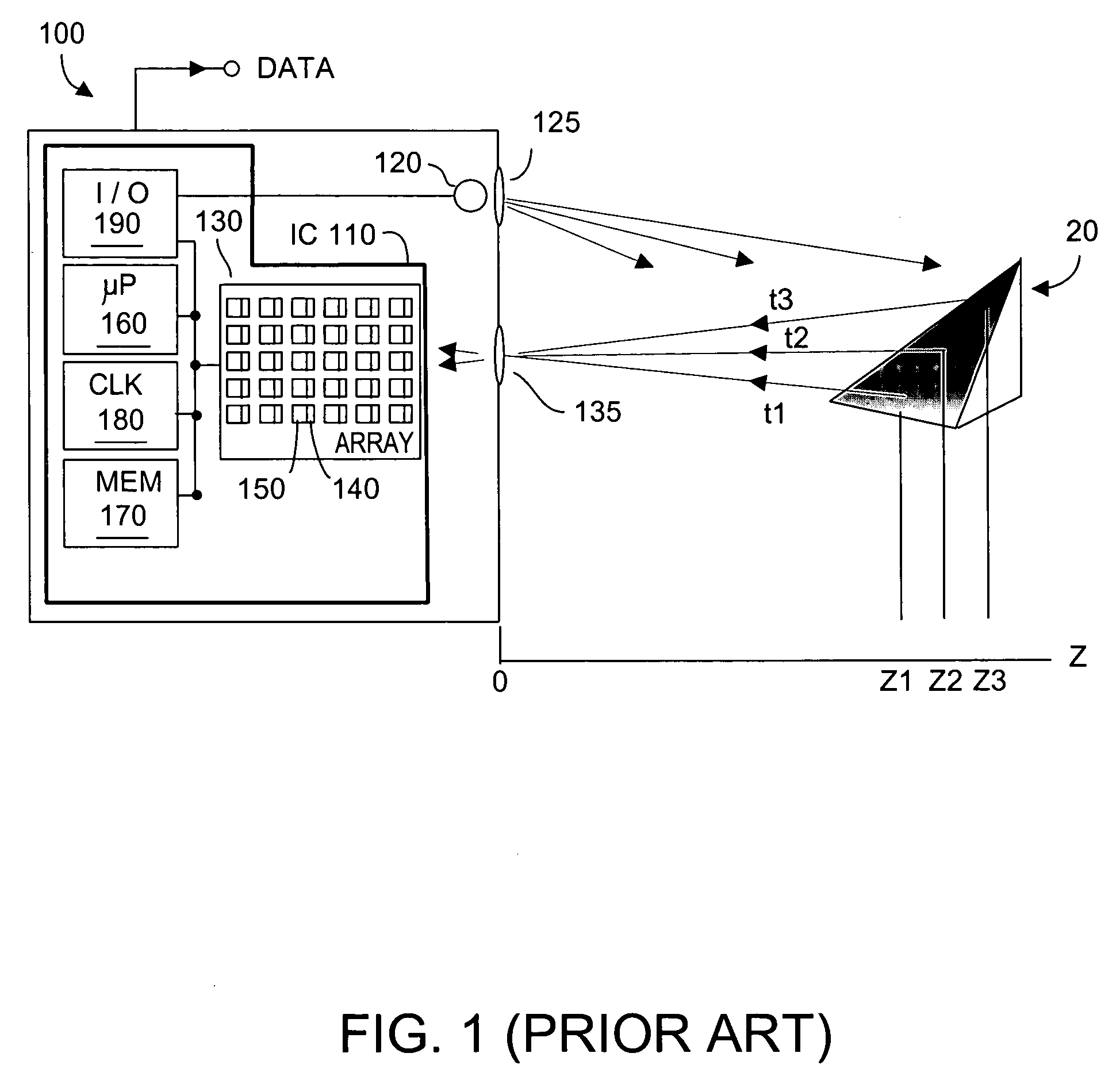Method and system for automatic gain control of sensors in time-of-flight systems
a technology of automatic gain control and sensor, applied in the field of cmosimplementable image sensors, can solve the problems of difficult computer program to judge object distance, inability to simultaneously measure distance for all objects in the field of view, and inability to achieve accurate depth data, the effect of maximizing the number of pixel detector sensors
- Summary
- Abstract
- Description
- Claims
- Application Information
AI Technical Summary
Benefits of technology
Problems solved by technology
Method used
Image
Examples
Embodiment Construction
[0036]FIG. 3 depicts a TOF system 200 with which the present invention, denoted 275, may be practiced to improve the validity of z depth measurements output as DATA. Element 275 preferably is software that when executed by microprocessor 260 carries out method steps, exemplified by the pseudocode of FIGS. 4-6. The present invention maximizes the number of photodetector pixels 240′″ in array 230 that operate within their intended dynamic range. The present invention can exercise control (depicted in FIG. 3 as CONTROL) over at least one parameter of TOF system 200. For example, if the present invention determines that too many photodetectors are saturating, a CONTROL signal can be generated varying at least one TOF system 200 parameter. For example, the CONTROL signal may cause TOF system 200 to more frequently reset common mode in the detectors, as described in U.S. Pat. No. 6,919,549 (2005) Method and System to Differentially Enhance Sensor Dynamic Range, and / or to reduce detection ...
PUM
 Login to View More
Login to View More Abstract
Description
Claims
Application Information
 Login to View More
Login to View More - R&D
- Intellectual Property
- Life Sciences
- Materials
- Tech Scout
- Unparalleled Data Quality
- Higher Quality Content
- 60% Fewer Hallucinations
Browse by: Latest US Patents, China's latest patents, Technical Efficacy Thesaurus, Application Domain, Technology Topic, Popular Technical Reports.
© 2025 PatSnap. All rights reserved.Legal|Privacy policy|Modern Slavery Act Transparency Statement|Sitemap|About US| Contact US: help@patsnap.com



